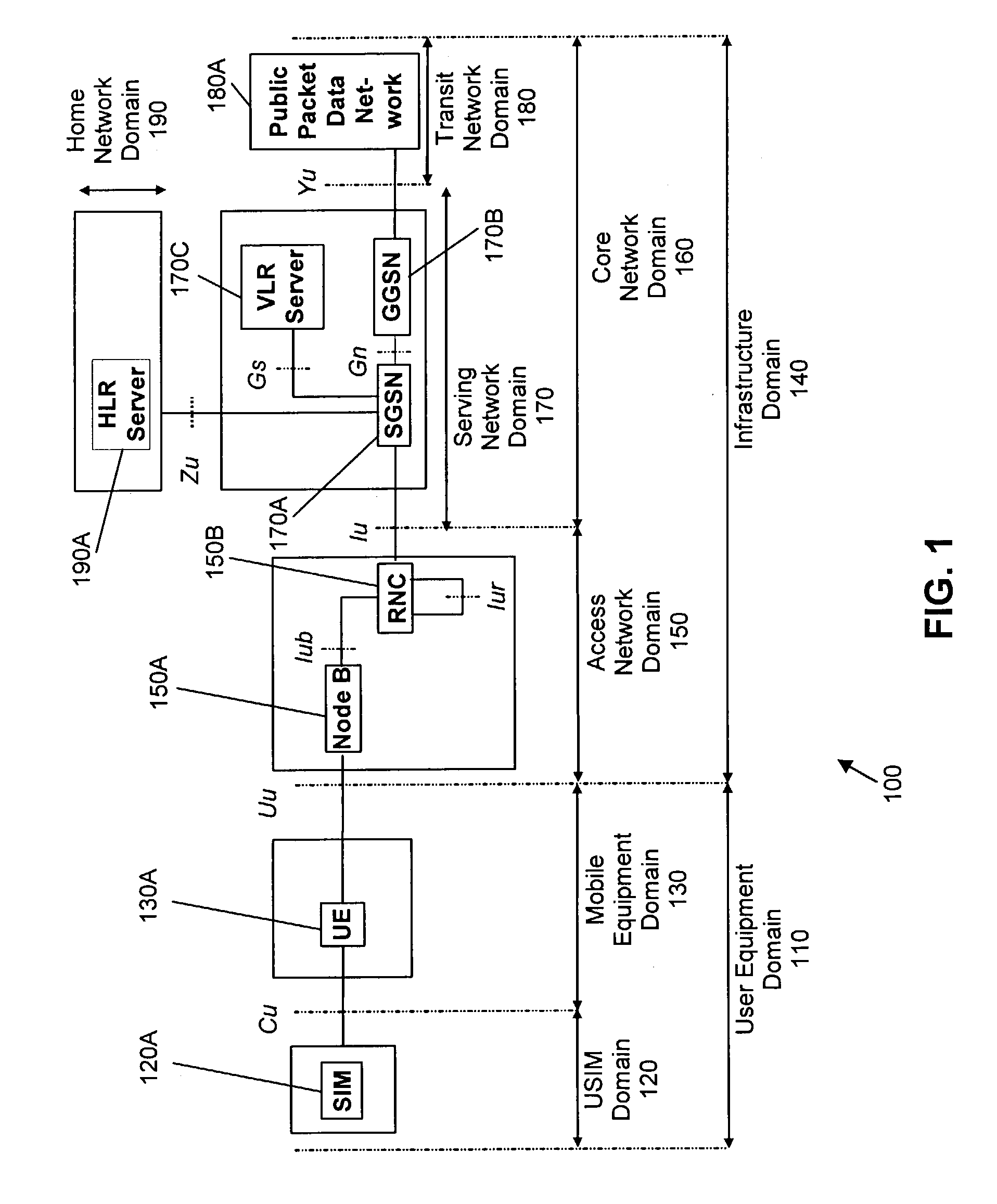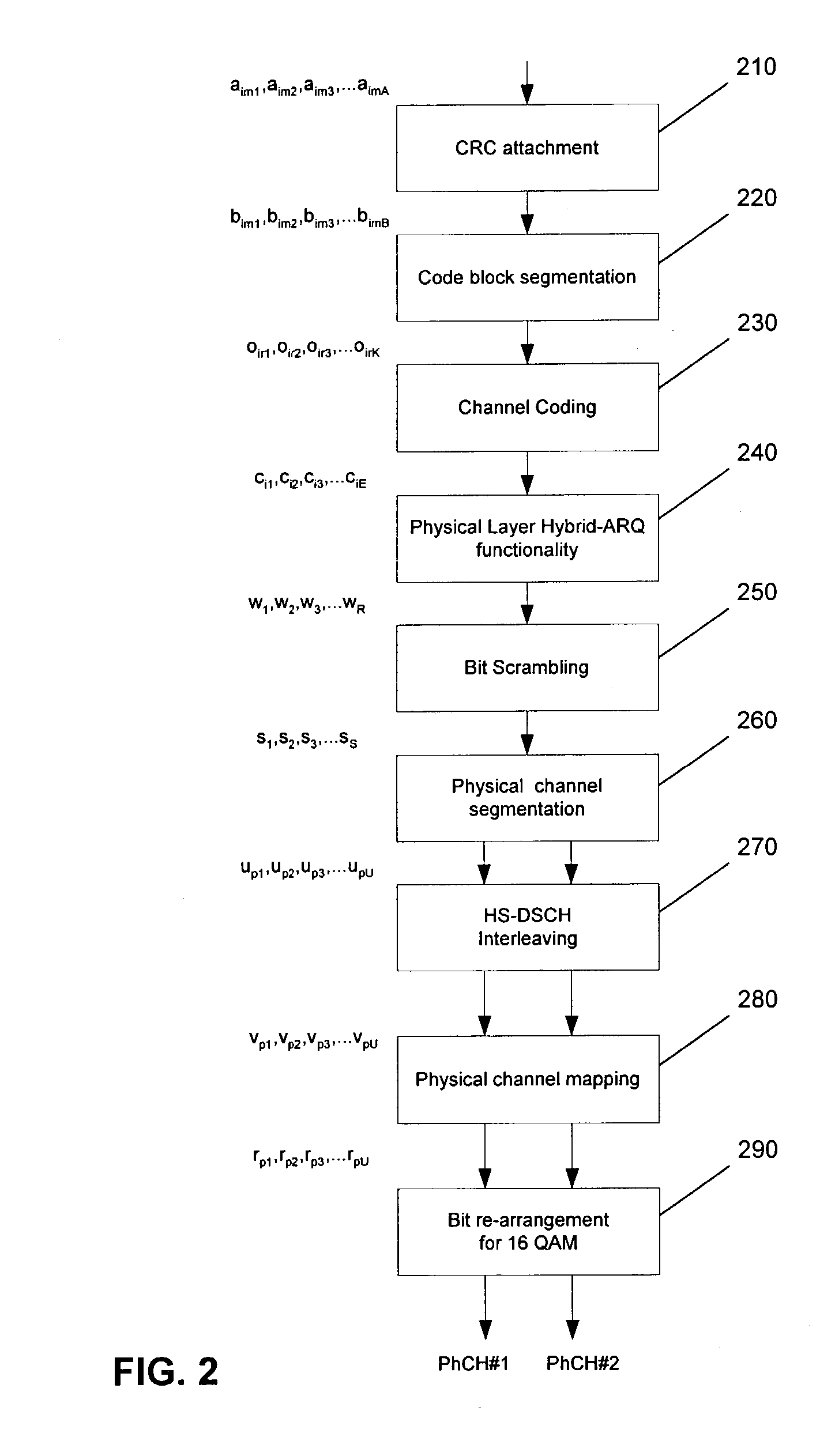Arrangement and method for channel mapping in a wireless communication system
hannel mapping technology, applied in the field of arrangement of channel mapping in a wireless communication system, can solve the problem that the alternative approach does not give the interleaving benefit that is obtained
- Summary
- Abstract
- Description
- Claims
- Application Information
AI Technical Summary
Benefits of technology
Problems solved by technology
Method used
Image
Examples
embodiment 1
[0057] The relevant sections of the TDD HSDPA transport channel processing chain in order to achieve embodiment 1 are illustrated in FIG. 5.
[0058] As will be described in greater detail below, a HARQ bit collection block (510) collects bits from earlier HARQ rate matching function (not shown) and supplies bits to a HS-DSCH interleaver (520), which comprises a systematic interleaver (530) and a parity interleaver (540). It will be understood by those skilled in the art that the bits labelled "sys" are preferably systematic bits and the bits labelled "par" are preferably parity bits. In general, the HARQ rate matching function will not produce equal numbers of systematic and parity bits, for this reason the "sys" stream contains preferably systematic bits, but if there are insufficient systematic bits, this stream may also contain parity bits. It will further be understood that the blocks 510-540 are well-known per se and need not be described in further detail.
[0059] As shown in FIG....
embodiment 2
[0067] Referring now to FIG. 7, in a second embodiment of the invention (similarly to embodiment 1 described above in relation to FIG. 5), a HARQ bit collection block (710) collects bits from earlier HARQ rate matching function (not shown) and supplies bits to a HS-DSCH interleaver (720), which comprises a systematic interleaver (730) and a parity interleaver (740).
[0068] As shown in FIG. 7, the TDD HSPDA transport channel processing chain in embodiment 2 includes a symbol based physical channel mapping block (760) that supplies symbols to a modulator (not shown) for modulation for transmission on the transport channel in known manner, but in comparison with the FIG. 5 it can be seen that there is no symbol grouping function such as the symbol grouping block (550); instead embodiment 2 the order in which bits are mapped to physical channels is redefined in relation to the physical channel mapping for FDD HSDPA. For the sake of clarity, the following explanation of embodiment 2 focus...
embodiment 3
[0073] Referring now to FIG. 9, (similarly to embodiment 2 described above in relation to FIG. 7) a HARQ bit collection block (910) collects bits from earlier HARQ rate matching function (not shown) and supplies bits to a HS-DSCH interleaver (920), which comprises a systematic interleaver (930) and a parity interleaver (940).
[0074] Similarly to embodiment 2, the TDD HSPDA transport channel processing chain in embodiment 3 includes a bit-pair based physical channel mapping block (960) that supplies bit-pairs to a modulator (not shown) for modulation for transmission on the transport channel in known manner, and unlike embodiment 1 described above in relation to FIG. 5 there is no symbol grouping function such as the symbol grouping block (550). In embodiment 3, as in embodiment 2, the order in which bits are mapped to physical channels is redefined in relation to the physical channel mapping for FDD HSDPA. For the sake of clarity, as above, the following explanation of embodiment 3 f...
PUM
 Login to View More
Login to View More Abstract
Description
Claims
Application Information
 Login to View More
Login to View More - R&D
- Intellectual Property
- Life Sciences
- Materials
- Tech Scout
- Unparalleled Data Quality
- Higher Quality Content
- 60% Fewer Hallucinations
Browse by: Latest US Patents, China's latest patents, Technical Efficacy Thesaurus, Application Domain, Technology Topic, Popular Technical Reports.
© 2025 PatSnap. All rights reserved.Legal|Privacy policy|Modern Slavery Act Transparency Statement|Sitemap|About US| Contact US: help@patsnap.com



